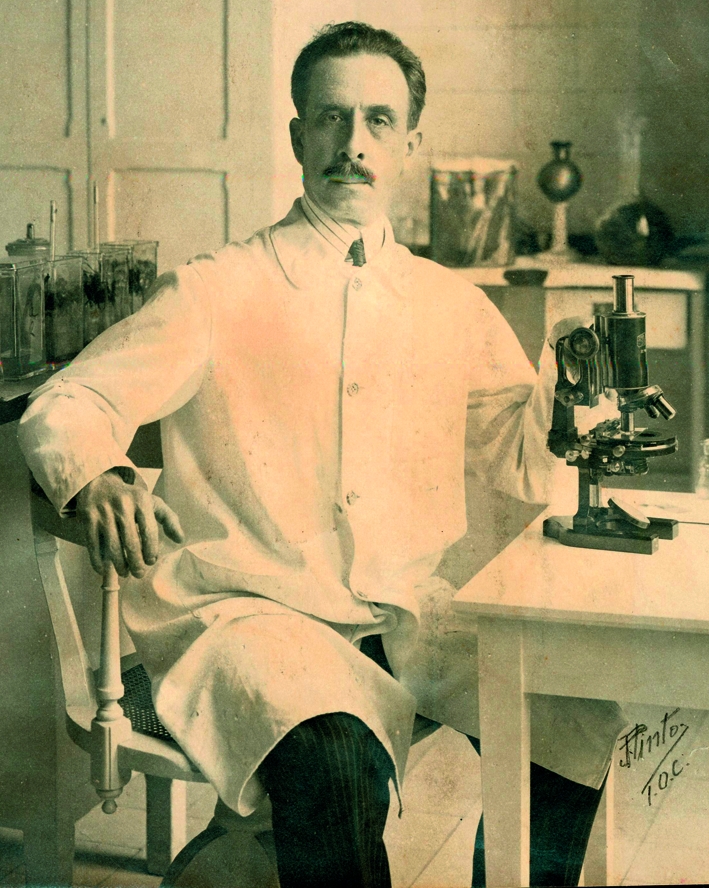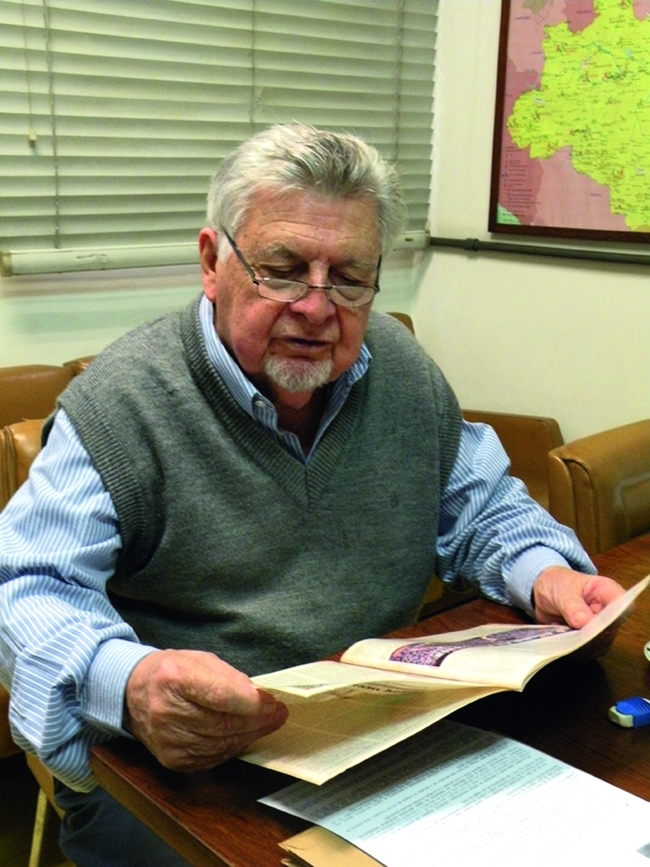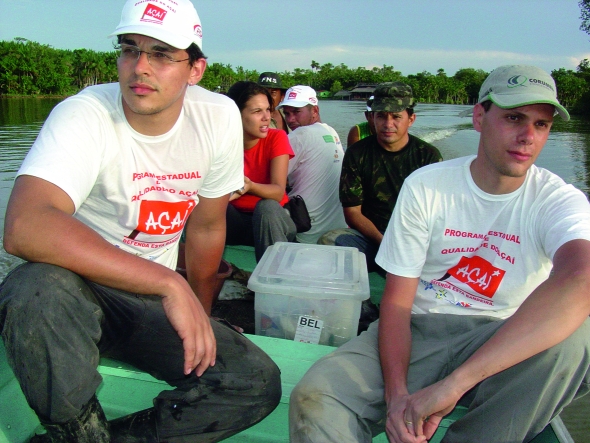Abstract
This April marked the 100th anniversary of Carlos Chagas’s discovery of a new disease. Yet most people in need still lack access to diagnosis and treatment. Claudia Jurberg reports.
Her name is Maria Luiza Alves Ferreira and she was born on a cattle farm in Minas Gerais, south-eastern Brazil in 1949. She had nine siblings at the outset. And then there were three. “I lost six brothers to Chagas disease,” she says matter-of-factly. “They all died in a short period of time.” What killed them was a parasite carried by a blood sucking insect, the reduviid bug. Forty years before Maria Luiza was born, Brazilian physician Carlos Ribeiro Justiniano das Chagas, who had been brought up on a farm just like hers, had identified the parasite and what it did.
Chagas stands alone in the annals of tropical medicine as the only researcher ever to describe a new infectious disease in all its aspects, from the causal pathogen, the vector – the blood-sucking triatomine bug that transmits it – and the parasite’s life-cycle with its natural reservoirs to a description of the disease itself. In 1908, he discovered the parasite and then, in the following year, while observing blood samples from a two-year-old girl, he identified the pathogen infecting her as the same flagellate protozoan. This parasite, he found, was carried in the gut of a bug known in the Americas by several names, notably ‘the barber’ and ‘the kissing bug’ because it bites the face of its sleeping victims.
Chagas mistakenly thought that the triatomine bug’s bite was the main route of infection. Transmission, in fact, occurs via the insect’s faeces, as the bugs defecate on a person’s skin while feeding on their blood. But his achievement still stands. Identifying the pathogen as a new species of Trypanosoma, he named it Trypanosoma cruzi, abbreviated to T. cruzi, after Oswaldo Cruz, the great Brazilian scientist – his mentor and boss. “The discovery caused a considerable stir in the Brazilian scientific community,” says historian Simone Kropf of the Oswaldo Cruz Foundation, noting that the National Academy of Medicine took the unprecedented step of creating a new membership position to invite Chagas into its ranks in 1910.
Usually, people who have been bitten become infected when the triatomine bug’s faeces enter the insect bite, or when they rub their eyes or through breaks or cuts in the skin. But T. cruzi can also be transmitted through blood transfusions, contaminated food and drink, congenitally – when babies are born to infected mothers – and even through organ transplants. The acute phase of the disease lasts around two months and is usually asymptomatic. That is followed by the chronic phase that will last a lifetime without treatment. Some 30% of cases can lead to heart disease, while 5–10% of cases take on a digestive or mixed form, combining heart and digestive problems.
“While Brazil’s scientific community celebrated Chagas’s achievement, they were also forced to take stock of the precarious sanitary and living conditions experienced by many of their countrymen in rural areas,” says Kropf, who notes that the disease was and still is closely associated with poverty. According to the Pan American Health Organization, WHO’s regional office in the Americas, most people affected by Chagas today come from low-income groups living in poorly constructed houses. In their natural state, the bugs that transmit the parasite live in palm trees and rock crevices, but some have adapted to life in human dwellings, typically hiding during the day in the cracked walls of mud or mud-brick houses, and coming out at night to feed.
It is estimated that about 10 million people are infected with Chagas in the Americas, 2 million of them in Brazil alone. More than 10 000 die each year as a result. Because Chagas disease affects mainly poor people in developing countries, little has been invested in diagnostics and treatment – despite intensive research on the disease. But in the last few years several research projects have taken up the challenge.
The Special Programme for Research and Training in Tropical Diseases, which is sponsored by WHO and other United Nations agencies, is supporting three projects involving new drug and diagnostics development for Chagas. One is a clinical trial in collaboration with the Canadian Institutes of Health Research to examine the role of trypanocidal treatment in individuals in the chronic phase of asymptomatic Chagas.
Other research is going on, including projects in Argentina, Brazil, Canada, Colombia, France and the United States [of America], some of this supported by the Drugs for Neglected Diseases initiative. There is also a T. cruzi genome project run by the Seattle Biomedical Research Institute in the USA and the Karolinska Institute in Sweden.
“It is a disgrace that we have known about Chagas for 100 years and yet most people in need still do not have access to diagnosis and treatment,” says Dr Pedro Albajar Vinas, a technical officer from the department of Neglected Tropical Diseases at the World Health Organization (WHO) in Geneva. “But with renewed commitment from countries in the Americas, Europe and the Western Pacific, we hope this will change.”
Countries most affected by the disease are working together to control Chagas in other ways too, notably with intergovernmental initiatives. The Southern Cone Initiative is one; launched in 1991, it brings together the ministers of health of Argentina, the Plurinational State of Bolivia, Brazil, Chile, Paraguay and Uruguay. Since then, Argentina, Brazil, Chile and Uruguay have made considerable progress in reducing transmission of the disease. João Carlos Pinto Dias, a researcher from the René Rachou Institute in the Brazilian city of Minas Gerais, says that vectoral and transfusion transmission of Chagas disease in large areas of the country has been dramatically reduced. “The incidence of new cases reported annually was 100 000 per year in the 1970s. Today, the country sees around 100 to 150 cases per year and most of those are the result of oral transmission in the Amazon region,” he says, adding; “But we cannot forget the millions of chronic cases, they are still a challenge.”
WHO’s Member States committed themselves to halting transmission of Chagas by 2010 in a resolution at the World Health Assembly in 1998 – a goal they will not achieve. The challenges are great. T. cruzi is a moving target and does not limit itself to triatomine bugs but has multiple animal reservoirs. Moreover, as habitats change so do the parasite’s opportunities for colonization. André Luiz Rodrigues Roque, a researcher who with his colleagues has set up mobile laboratories in the Brazilian states of Santa Catarina, Tocantins, Pará and Ceará, spends a good deal of time investigating outbreaks in the field. He has observed that deforestation and a reduction of fauna diversity can lead to animals with high T. cruzi parasite loads in their blood. “The Amazon region is a mosaic,” Roque says. “This means we cannot take only one action to fight the disease, because there are different habitats and different epidemiological profiles.”
In recent years rapid jet travel and migration of populations has led to the importation of Chagas into countries outside Latin America, including Australia, Canada, France, Germany, Italy, Japan, Spain and the USA.
For José Rodrigues Coura, a researcher at the Oswaldo Cruz Institute in Rio de Janeiro, nothing less than “constant vigilance” is needed to deal with Chagas disease – a relentless attack on all fronts including: vector control, in so far as this is possible; housing improvement; the provision of comprehensive and accessible medical care; blood-screening programmes, and the treatment of already infected individuals. “It is a disease that occurred for thousands of years and it will occur for another thousand,” says Coura. While eradication cannot be considered, there is hope for halting transmission.
After all, the past 40 years or so have seen significant progress, and there are now some promising developments in terms of new diagnostics and treatment. WHO’s Albajar Vinas is looking forward to 2010, when countries are set to re-affirm their commitment to controlling Chagas in a resolution at the World Health Assembly. The resolution, originally scheduled for this year’s assembly, was postponed until next year. “We have a better understanding of how to treat and manage Chagas disease. We know that using the present tools we can control the disease in most places in the world,” he says. “We need this commitment to maximize the use of the tools we already have.” ■

Carlos Ribeiro Justiniano das Chagas
Courtesy of the Oswaldo Cruz Institute

José Rodrigues Coura, a researcher at the Oswaldo Cruz Institute in Rio de Janeiro, Brazil.
Courtesy of José Rodrigues Coura
Researcher André Luiz Rodrigues Roque (front right) and his colleagues working at a mobile laboratory that investigates outbreaks of Chagas in the field.
José Pantoja



